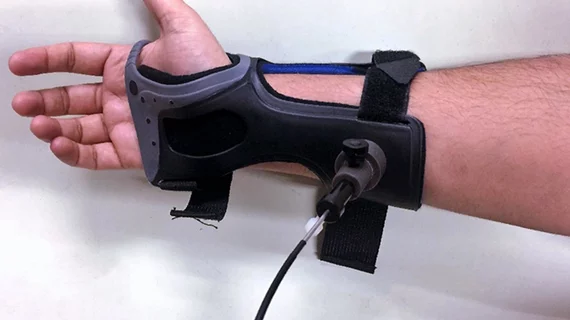New, noninvasive blood glucose test as effective as finger prick test
People living with diabetes may soon have a noninvasive option for monitoring their blood glucose levels after a new device was proven to be just as effective as a finger prick test.
Researchers with the University of Missouri School of Medicine and Massachusetts Institute of Technology (MIT) recently tested the effectiveness of a new device called the spectroscopy that measures blood glucose without having to draw blood. The device’s effectiveness was detailed in a study recently published in Analytical and Bioanalytical Chemistry.
The results come at a time when another promised innovator in the blood testing field, Theranos, shuttered its doors last months following scandals that its break-through technology to test blood didn't actually work.
“Developed by researchers from MIT, the device uses a technique called Raman spectroscopy to measure the chemical composition of skin and extract the amount of glucose out of other skin compartments,” a news release stated. “A fiber-optic cable attached to a wristband passes laser light onto the skin to detect different components in the skin, such as fat tissue, protein, collagen and glucose molecules. The shifts in wavelengths associated with glucose present in the blood creates a sort of molecular fingerprint that can be used to determine glucose levels.”
In the study, researchers tested the glucose levels of non-diabetic adults before they drank a high-sugar drink. They then measured the blood glucose levels of the participants in intervals using the spectroscopy, IV blood test and finger prick. The results revealed that the spectroscopy was just as accurate as a finger prick test.
Researchers are now preparing to do more studies on the spectroscopy test and hope it becomes another option for testing a patient’s glucose levels in clinical settings.
“We know that handheld skin prick tests are not always accurate and may be uncomfortable for patients. The gold standard is intravenous blood testing, but frequent blood draws may not be an option for many patients,” MIT Laser Biomedical Research Center research scientist Jeon Woong Kang, PhD, said in a statement.
“We were pleased to find that our initial results show Raman spectroscopy can measure glucose levels that are comparable to the finger stick devices. We hope that we can refine this method to be a noninvasive continuous glucose monitoring sensor.”

